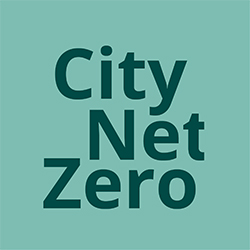Contrary to most sectors, to date the tourism and aviation industries have not managed to level off greenhouse gas emissions. Moreover, effective mitigation through technological innovation or structural and behavioural change cannot be expected shortly. Airlines and tourism companies appear to use carbon offsetting as a last resort. However, offsetting is generally acknowledged as a second-best solution for mitigating emissions, after reducing energy use. This paper seeks to determine the mitigation potential of voluntary carbon offsetting by comparing public and industry awareness of climate change and aviation emissions, and attitudes to various mitigation measures with relevant online communication by 64 offset providers. Methods were a literature review and online content analyses. Overall, the gaps that were identified between awareness, attitude and actual behaviour are not bridged by provider communication. From this perspective, the mitigation potential of voluntary carbon offsetting for achieving reductions of tourism transport emissions is estimated as low. The same conclusion is reached by comparing carbon dioxide volumes of flight offsets with actual air travel emissions. Current sales of flight offsets compensate less than 1% of all aviation emissions.
MULTIFILE
Airport management is often challenged by the task of managing aircraft parking positions most efficiently while complying with environmental regulations and capacity restrictions. Frequently this task is additionally affected by various perturbations, affecting punctuality of airport operations. This paper presents an innovative approach for obtaining an efficient stand assignment considering the stochastic nature of the airport environment and emissions reduction target of the modern air transportation industry. Furthermore, the presented methodology demonstrates how the same procedure of creating a stand assignment can help to identify an emissions mitigation potential. This paper illustrates the application of the presented methodology combined with simulation and demonstrates the impact of the application of Bayesian modeling and metaheuristic optimization for reduction of taxi-related emissions.
DOCUMENT
Greenhouse gas emissions from air transport, and methods to calculate them, are notwell defined in the current literature. While calculating the direct emissions of CO2 is already causefor some debate, the contribution of other emissions and impacts – like nitrogen oxides (NOx),contrails, water vapour – to climate change still lacks a reliable metric. As aviation is the largestemitter of greenhouse gases within tourism, accurate estimates of carbon and non-carbon emissions are important. This paper presents some standardisation as well as general insights to assistresearchers assessing the impact of aviation on climate change in scenario studies or evaluatingmitigation policies. The IPCC introduced a radiative forcing index (RFI) to measure the role of aviation in climate change, which is in scenario studies or evaluations of policies often used as a kind ofconstant ‘equivalence factor’. The paper shows this to be inaccurate and proposes ways to accountfor both carbon and non-carbon climate impacts of air transport
DOCUMENT
The primary objective of the project is to identify policies for the transformation of the Norwegian tourism sector to become resilient to climate change and carbon risks; to maintain and develop its economic benefits; and to significantly reduce its emissions-intensity per unit of economic output. Collaborative partnersStiftinga Vestlandforsking, Stiftelsen Handelshoyskolen, Stat Sentralbyra, Norges Handelshoyskole, Stiftelsen Nordlandsforskning, Fjord Norge, Hurtigruten, Neroyfjorden Verdsarvpark, Uni Waterloo, Uni Queensland, Desinasjon Voss, Stift Geirangerfjorden Verdsarv, Hogskulen Pa Vestlandet.
By transitioning from a fossil-based economy to a circular and bio-based economy, the industry has an opportunity to reduce its overall CO2 emission. Necessary conditions for effective and significant reductions of CO2-emissions are that effective processing routes are developed that make the available carbon in the renewable sources accessible at an acceptable price and in process chains that produce valuable products that may replace fossil based products. To match the growing industrial carbon demand with sufficient carbon sources, all available circular, and renewable feedstock sources must be considered. A major challenge for greening chemistry is to find suitable sustainable carbon that is not fossil (petroleum, natural gas, coal), but also does not compete with the food or feed demand. Therefore, in this proposal, we omit the use of first generation substrates such as sugary crops (sugar beets), or starch-containing biomasses (maize, cereals).
In the context of global efforts to increase sustainability and reduce CO2 emissions in the chemical industry, bio-based materials are receiving increasing attention as renewable alternatives to petroleum-based polymers. In this regard, Visolis has developed a bio-based platform centered around the efficient conversion of plant-derived sugars to mevalonolactone (MVL) via microbial fermentation. Subsequently, MVL is thermochemically converted to bio-monomers such as isoprene and 3-methyl-1,5-pentane diol, which are ultimately used in the production of polymer materials. Currently, the Visolis process has been optimized to use high-purity, industrial dextrose (glucose) as feedstock for their fermentation process. Dutch Sustainable Development (DSD) has developed a direct processing technology in which sugar beets are used for fermentation without first having to go through sugar extraction and refinery. The main exponent of this technology is their patented Betaprocess, in which the sugar beet is essentially exposed to heat and a mild vacuum explosion, opening the cell walls and releasing the sugar content. This Betaprocess has the potential to speed up current fermentation processes and lower feedstock-related costs. The aim of this project is to combine aforementioned technologies to enable the production of mevalonolactone using sucrose, present in crude sugar beet bray after Betaprocessing. To this end, Zuyd University of Applied Sciences (Zuyd) intends to collaborate with Visolis and DSD. Zuyd will utilize its experience in both (bio)chemical engineering and fermentation to optimize the process from sugar beet (pre)treatment to product recovery. Visolis and DSD will contribute their expertise in microbial engineering and low-cost sugar production. During this collaboration, students and professionals will work together at the Chemelot Innovation and Learning Labs (CHILL) on the Brightlands campus in Geleen. This collaboration will not only stimulate innovation and sustainable chemistry, but also provides starting professionals with valuable experience in this expanding field.
Centre of Expertise, onderdeel van Hogeschool van Amsterdam
